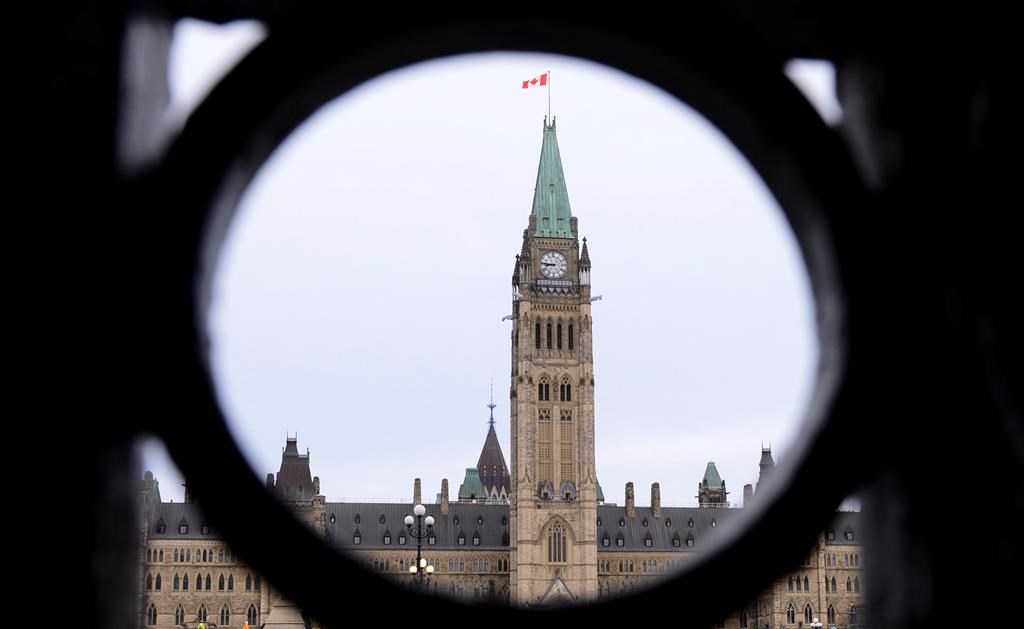Harper goes hunting for Franklin Expedition, takes target practice with Rangers
Posted August 21, 2013 4:34 am.
This article is more than 5 years old.
GJOA HAVEN, Nunavut – Stephen Harper’s argument for Canadian sovereignty in the Far North took a decidedly historic turn Wednesday as the prime minister dropped in on scientists and coast guard officers hunting for the wreckage of the lost Franklin Expedition.
The effort to locate two 19th-century British exploration ships, which disappeared without a trace looking for the Northwest Passage, has captured the imagination of scholars and adventurers for more than 100 years.
“Why do Canadians remain interested in this? Obviously, it’s part of our heritage, part of the history that makes Canada, Canada,” Harper said aboard the coast guard icebreaker Sir Wilfrid Laurier, anchored off this remote Arctic hamlet.
“I also think it’s because the modern age abhors a mystery.”
Subsequent searches for Sir John Franklin’s HMS Terror and HMS Erebus ended up mapping much of the northern archipelago that Ottawa claims as Canadian territory, he added.
Optimism in running high among researchers because of the addition of military-grade, side-scan sonar and unmanned underwater vehicles, which are better able to probe the frigid, silent waters around Nunavut’s King William Island.
The exploration ships — the most advanced of their time — were lost in 1847 with all 129 crew members. Finding them has become a point of national pride, as well as a chance to demonstrate Canada’s sovereignty over the region.
Earlier Wednesday, Harper patrolled with members of the Canadian Rangers along the edge of the island after taking part in some target practice on the Arctic tundra the day before.
Both the prime minister and newly appointed Defence Minister Rob Nicholson tried their hand at firing the 1950s-era Lee Enfield rifles that are standard-issue weapons for the aboriginal reservists who comprise the Rangers.
“It was an honour to patrol with the Rangers … as they work to defend our territory from potential threats, and emergencies and keep our North strong, secure and free,” Harper said in a statement.
The prime minister clearly relished the exercise. During target practice, he fired from several different positions, including prone on the ground, sniper-style. The din of the rifles echoed across the vacant limestone and sand landscape.
For a prime minister whose mantra has been to assert and defend Canada’s claim to the Arctic, the exercise was as much a political statement as it was a chance to share in the rigours of life in the North.
“Canada has a choice when it comes to defending our sovereignty over the Arctic. We either use it or lose it,” he said in a July 2007 speech that helped lay the foundation for the Conservative government’s northern strategy.
The tough rhetoric and thundering military photo-ops, however, have gradually faded with each successive summer tour of the Arctic, which Harper has undertaken religiously since becoming prime minister.
With four cabinet members in tow, Harper and his outdoors-loving wife set up camp Tuesday on a remote stretch of beach about 20 kilometres from Gjoa Haven, birthplace of Environment Minister Leona Aglukkaq.
Enthusiastic Rangers helped him build an inukshuk, the stone landmark synonymous with the Inuit. They also showed him how to erect a traditional tundra shelter made of animal hide.
As the sun set close to midnight, Harper inspected drying Arctic char hung on string between wooden posts, and watched a demonstration of the lighting of qulliq, an Inuit oil lamp that is set ablaze using the spark of two flint rocks.
National Defence spend $38 million annually on the Ranger program, which on Wednesday marked the induction of its 5,000th member.
A recently released defence science report on the Arctic noted the reserve force does not have training in air-mobile and water-borne operations.
Maj. Andre Salloum said future specialized training is being considered, but it “is in the planning stages.”
The army has been trying for years to replace the aging Lee Enfields, which are updated Second World War-vintage versions of the classic rifles first introduced to the British Army in 1895.
The fact that they don’t freeze up or jam in the Arctic is part of their charm.
At a stop in Hay River, N.W.T., prior to arriving in Nunavut, Harper acknowledged National Defence was still looking for an appropriate replacement.
“I am told there is no difficulty in servicing the weapons at this time, but this is a concern and we believe it is time,” he said. “The Department of National Defence is in the process of scoping out the program for replacement and I expect that to happen over the next few years.”
The weapons were purchased in the 1950s; a statement from Harper’s office on Wednesday said the government plans to begin replacing them in 2016.
In 2011, Public Works put out a call to companies for specifications for 10,000 replacement rifles, but defence industry sources have said that the program has been held up over concern about who holds the design rights on certain weapons.
Note to readers: This is a corrected story. Earlier versions described the rifle used by the Canadian Rangers as “First World War-vintage.”










